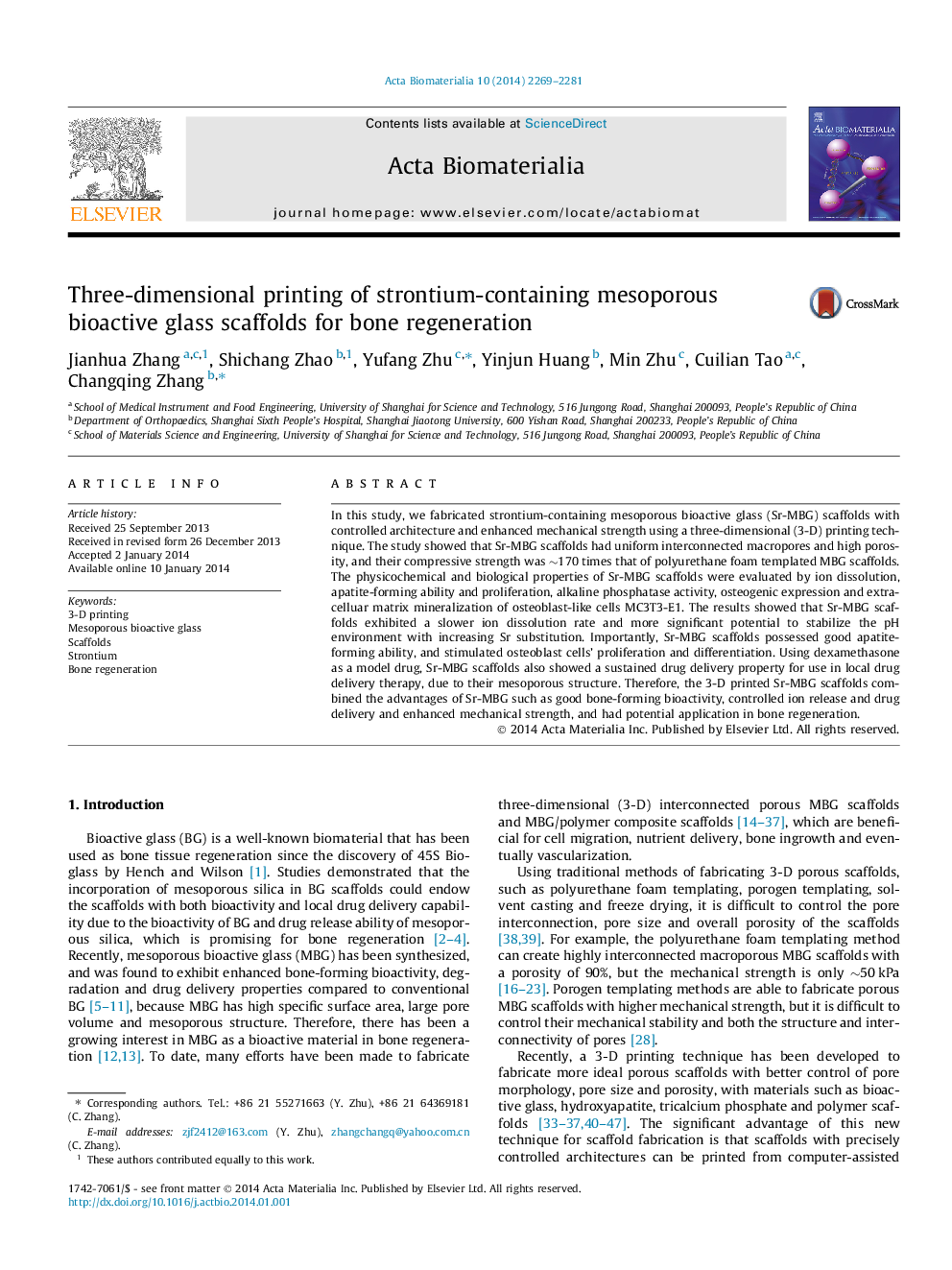| Article ID | Journal | Published Year | Pages | File Type |
|---|---|---|---|---|
| 10159233 | Acta Biomaterialia | 2014 | 13 Pages |
Abstract
In this study, we fabricated strontium-containing mesoporous bioactive glass (Sr-MBG) scaffolds with controlled architecture and enhanced mechanical strength using a three-dimensional (3-D) printing technique. The study showed that Sr-MBG scaffolds had uniform interconnected macropores and high porosity, and their compressive strength was â¼170 times that of polyurethane foam templated MBG scaffolds. The physicochemical and biological properties of Sr-MBG scaffolds were evaluated by ion dissolution, apatite-forming ability and proliferation, alkaline phosphatase activity, osteogenic expression and extracelluar matrix mineralization of osteoblast-like cells MC3T3-E1. The results showed that Sr-MBG scaffolds exhibited a slower ion dissolution rate and more significant potential to stabilize the pH environment with increasing Sr substitution. Importantly, Sr-MBG scaffolds possessed good apatite-forming ability, and stimulated osteoblast cells' proliferation and differentiation. Using dexamethasone as a model drug, Sr-MBG scaffolds also showed a sustained drug delivery property for use in local drug delivery therapy, due to their mesoporous structure. Therefore, the 3-D printed Sr-MBG scaffolds combined the advantages of Sr-MBG such as good bone-forming bioactivity, controlled ion release and drug delivery and enhanced mechanical strength, and had potential application in bone regeneration.
Related Topics
Physical Sciences and Engineering
Chemical Engineering
Bioengineering
Authors
Jianhua Zhang, Shichang Zhao, Yufang Zhu, Yinjun Huang, Min Zhu, Cuilian Tao, Changqing Zhang,
